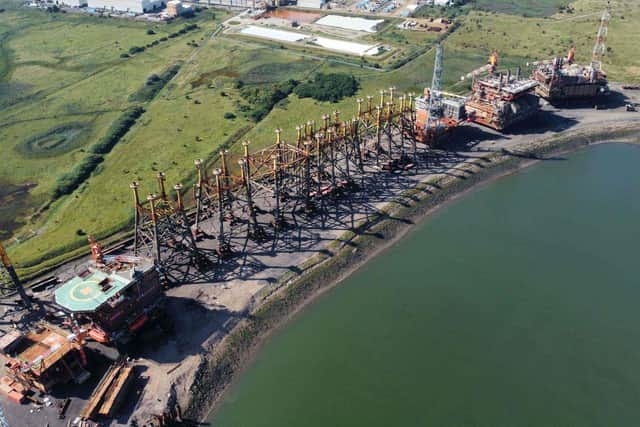Decade-long decommissioning programme will generate £16 billion of work from North Sea
Oil and gas installations ranging from massive rigs to the well heads that sit on the seabed in hundreds of metres of water are to be brought to shore for reuse, recycling and disposal, according to a new industry study.
Decommissioning Insight 2021, published by offshore industry body OGUK, sets out plans for what is thought to be one of the largest marine removal programmes ever attempted.
Advertisement
Hide AdAdvertisement
Hide AdOperators - the companies directly involved in extracting oil and gas - will spend an estimated £16.6bn on the decade-long programme, supporting thousands of jobs both directly and in the supply chain, the report added.


During 2020 and 2021, the industry has decommissioned 234 wells - removing 21 platforms along with more than 50,000 tonnes of other underwater structures.
Joe Leask, OGUK’s decommissioning manager, said: “Decommissioning is more than a great challenge. It’s also a huge opportunity for UK companies to show their engineering skills, powers of innovation and ability to compete on a global scale.
“OGUK’s 2021 Decommissioning Insight report shows that over the last five years the UK decommissioning industry has improved its efficiency and cut its costs by an estimated 23 per cent. So, we have done better but I think we can still do a lot more.
“If operators work together to create larger projects where we get economies of scale, then we can safely drive costs down even more.
“Decommissioning is also a key part of the UK’s transition to low-carbon energy and its aim of reaching net zero by 2050. This is partly because the installations being removed tend to be older and so generate more emissions relative to the oil and gas they produce.
“But it is also because of the growing opportunities for reuse, repurposing and recycling.
“This is going to be an exciting ten years – there’s a huge amount of work to be done and with £16.6bn to be spent, there will be many opportunities for UK companies and workers.”
A message from the Editor:
Thank you for reading this article. We’re more reliant on your support than ever as the shift in consumer habits brought about by coronavirus impacts our advertisers. If you haven’t already, please consider supporting our trusted, fact-checked journalism by taking out a digital subscription: www.scotsman.com/subscriptions
Comments
Want to join the conversation? Please or to comment on this article.
